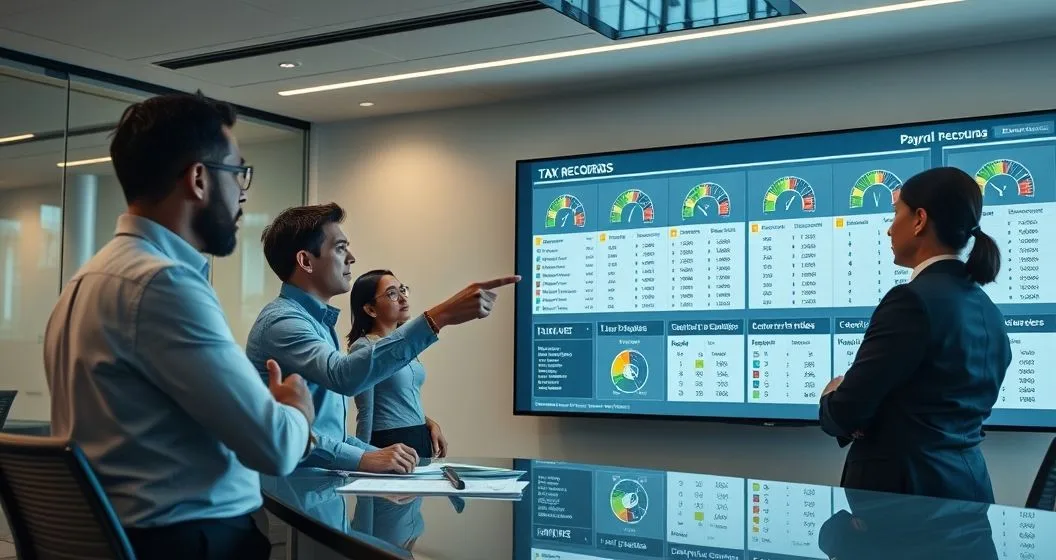Background
Employment tax audits focus on correct withholding, timely deposits, and accurate reporting of wages and taxes. The IRS does not audit every return; it prioritizes returns that show higher risk based on third‑party reports (W‑2s and 1099s), automated scores, and targeted programs. See the IRS overview of audits for small businesses and self‑employed taxpayers (IRS) at: https://www.irs.gov/businesses/small-businesses-self-employed/audits.
How the selection process works
- Third‑party information matching: The IRS compares income and withholding reported on an employer’s return to W‑2s, 1099s and other information returns. Mismatches often trigger further inquiry (IRS information returns/matching program: https://www.irs.gov/filing/individual/information-returns-matching-program).
- Scoring and statistical models: Historically, the Discriminant Function (DIF) system assigned risk scores to returns. The IRS also uses other scoring tools and rule‑based filters to prioritize examinations.
- Programmatic and industry targeting: Certain industries (e.g., construction, restaurants, retail) face more scrutiny because of cash transactions, common misclassification of workers, or high audit rates.
- Complaints and referrals: Whistleblower tips, state agency referrals, or inconsistencies found during other IRS examinations can prompt an employment tax audit.
Common selection triggers for employment tax audits
- Mismatched income or withholding between Forms W‑2/1099 and the employer’s returns.
- Late or missing employment tax deposits or patterns of irregular deposits (which can lead to Trust Fund Recovery Penalty exposure).
- Large or unusual payroll deductions relative to industry norms or company size.
- New businesses with no filing history or sudden spikes in payroll costs.
- Worker classification issues: treating employees as independent contractors (1099) when facts indicate employment.
- Repeated corrections or amended returns that create a pattern of reporting inconsistency.
Who is most affected
Employers of all sizes can be selected, but small businesses in cash‑intensive trades, startups without historical filings, and organizations that use inconsistent payroll systems are more likely to draw attention. Household employers (nannies, caretakers) also fall under employment tax rules and can be audited.
Practical examples (realistic, anonymized)
- A construction firm reported high labor expenses but could not produce payroll registers or Forms W‑2 in a consistent format; an audit followed and items were adjusted until payroll records matched tax returns. Good payroll documentation resolved issues with minimal penalties.
- A restaurant owner had lower reported sales than 1099 income paid to contractors; the mismatch prompted a focused review that was resolved after presenting vendor contracts and receipts.
What to expect if selected
Most employment tax audits start with a mail notice requesting specific documents (a correspondence audit) or an appointment for an office or field examination. The notice will list documents to produce—payroll journals, Forms 941/940, W‑2s, 1099s, deposit records and bank statements. Respond promptly and provide organized documentation.
Steps to reduce selection risk and prepare
- Reconcile returns to third‑party forms. Match your Forms 941/940, W‑2s and 1099s before filing.
- Keep organized payroll records for at least three years (IRS guidance recommends retaining employment tax records; see IRS recordkeeping resources).
- Use consistent worker classification practices. Document why you treated someone as an independent contractor (contracts, control tests). For guidance, review IRS materials on worker classification and the Trust Fund Recovery Penalty (https://www.irs.gov/businesses/small-businesses-self-employed/trust-fund-recovery-penalty).
- Correct errors promptly. If you find a mistake, file corrected Forms 941/X or W‑2c and document the correction process.
- Consider a payroll system or professional payroll provider and periodic internal reviews to catch anomalies early.
Common misconceptions
- Myth: Only large businesses get audited. Reality: While audit rates vary, small businesses are frequently reviewed, especially in high‑risk industries.
- Myth: Fixing a return always triggers an audit. Reality: Correcting an honest error, with documentation, often reduces audit risk—deliberate noncompliance or repeated errors increases risk.
Resources and internal links
- Preparing for an Employment Tax Audit: Records Employers Must Keep — practical checklist for documents to have ready: Preparing for an Employment Tax Audit: Records Employers Must Keep.
- What Triggers an Employment Tax Examination and How to Prepare — deeper look at common triggers: What Triggers an Employment Tax Examination and How to Prepare.
- Employer Payroll Compliance: Avoiding Employment Tax Audits — steps to tighten payroll processes: Employer Payroll Compliance: Avoiding Employment Tax Audits.
Professional disclaimer
This article is educational and not legal or personalized tax advice. For complex situations or active audits, consult a CPA, enrolled agent, or tax attorney.
Authoritative sources
- IRS — Audits: https://www.irs.gov/businesses/small-businesses-self-employed/audits
- IRS — Information Returns Matching Program: https://www.irs.gov/filing/individual/information-returns-matching-program
- IRS — Trust Fund Recovery Penalty: https://www.irs.gov/businesses/small-businesses-self-employed/trust-fund-recovery-penalty
Notes on accuracy
This entry reflects IRS programs and commonly reported audit practices current as of 2025. The IRS does not publish the exact formulas it uses to score returns; descriptions above summarize known methods and practical triggers used by examiners.



